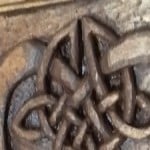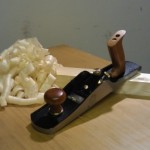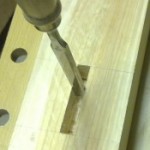Hand Planing
Welcome! / Forums / General Woodworking Discussions / Hand Planing
- This topic has 42 replies, 9 voices, and was last updated 11 years, 8 months ago by
Anonymous.
-
AuthorPosts
-
Anonymous18 November 2012 at 11:29 am #3400
This sometimes happens if the plane is set for too aggressive a cut, so – if that is the case – I’d suggest easing off on blade set (Amount of blade set below the plane sole) so you take a lighter cut, while trying to place more emphasis on taking a full length shaving and trying to avoid making stopped shavings.
 21 November 2012 at 4:48 am #3554
21 November 2012 at 4:48 am #3554I am really having a lot of trouble with planing too much off the end of the edge of a board ( if that makes any sense) i am working on it. I also have. Little trouble planing too much off the right side of the edge. thank God for my Veritas edge trimming plane 🙂
Anonymous21 November 2012 at 10:13 am #3569Hi Ron,
Such problems aren’t uncommon, but they are readily remedied with practise. 😉
1. Try and ease off pressure on the front of the plane and keep the plane sole in contact with the board as you approach the end of each planing stroke. This should help keep the plane’s toe raised as the plane reaches the end of the board, while keeping the plane referenced on the board will tend to keep it on the same plain.
2. Set the plane blade square to the sole. With the blade adjusted it proves possible to focus on keeping the rear handle vertical during use.
3. Check the edge for square after each planing stroke.
4. Adjust the horizontal angle at which you offer the plane to the work. Taping a lollipop stick to the side of your plane and matching it’s alignment to the vertical plain on the side of the work piece can help maintain plumb.
5. Reduce the set of the blade and this will tend to minimise discrepancies. Smaller discrepancies are – in turn – far easier to correct.
6. Mark a longitudinal reference line on each vertical face of the board as a ready guide and means of determining a square and straight edge. This should help and you’ll be surprised just how soon you reach a point there the need for a secondary line becomes obsolete.
I hope this helps 🙂

I’m also detecting a pattern in my errors when planing the edges of boards.
The end and sometimes also the first 2-4 inches looses material faster if I don’t pay close attention. My remedy at the moment is trying to adjust the pressure from front to rear tote as I move along the edge. I also find it helpful to draw a straight line on the face about 3mm (1/8″) from the edge. That makes it much easier to see any tendency and correct it early on.
Second observation is that I’m always low on the left side of the edge. I have to check my progress after 2-3 shavings with the square. If I just plane away the edge quickly dives to the left.
Two questions in regard to my description above:
1. How much pressure should be applied onto the plane when squaring a board? Just a light touch or my entire upperbody weight?
2. How do you ensure that the iron is dead square in the mouth? I first eyeball it when placing the iron, then sight down the sole trying to determine if one side appears first. Next I use small pieces of wood and carefully advance the blade making shure that both sides of the iron makes contact with the wood when moving it back and forth over the mouth.
Anonymous21 November 2012 at 10:52 am #3575Hey Jesper, sounds just like me. For me reducing the pressure has helped. I also started taking a few passes out of the centre first then planing right through, Paul shows this in the clock videos, and it really helps get a straight board. I also tend to be low on the left side, and like you I have started to use a line to plane to.
As for getting the Iron square in the mouth, I use the same method as you.
Very Best
Ken
Anonymous21 November 2012 at 10:59 am #3576Hi Jesper,
I’ll answer as best I can 🙂
Planing is much like using mallet and chisel, as you need to try and focus at all times.
1. Placing the front of the plane (The area from toe to front of mouth) upon the work piece, you should have sufficient pressure to hold the plane in place using only your leading hand…. The hand holding the knob. The degree of pressure varies depending on both plane and wood, but shouldn’t be physically difficult to maintain if setting the plane for a lighter cut.
2. The simplest set up for squaring a blade is;
a. Place a piece of scrap timber in the vise with grain running up hill and away from you.
b. Set the plane for a fine cut. Primarily zero the blade and – while attempting to plane the edge – gradually adjust it forward between each stroke.
c. Once you begin taking fine shavings, plane the wood using the right side of the edge and then plane the surface using the left side of the edge.
d. Adjust the blade until you’re taking even shavings with each side of the edge.
The blade is set squarely to the sole of the plane once you’ve begun taking matching shaving with each side of the edge. 🙂
Anonymous21 November 2012 at 11:12 am #3578No probs Ken 😉 , but you should’ve seen the long answer 😀
Anonymous21 November 2012 at 11:27 am #3581HaHa, Only joking Gary 🙂 you are doing a great job, and a great help to us all.

It looks like lot of us having same issues, for example I’m almost always high on left side. I tried to play with different amount of pressure or difrent stance but I didn’t have much success. It would be great if Paul can address this issues in some future episodes
@Gary: thanks for the tip about how to square a blade, maybe that is on my list of problems, I will try your way
-
AuthorPosts
- You must be logged in to reply to this topic.
